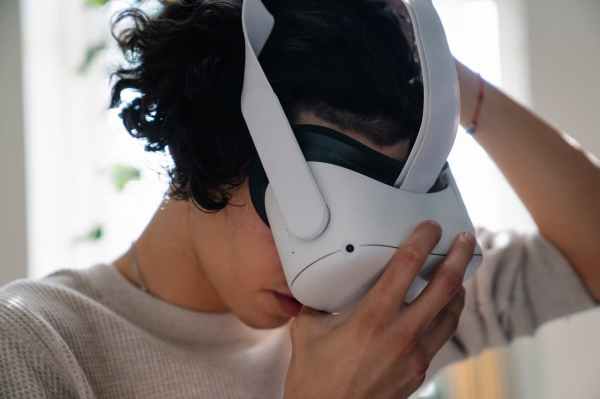Virtual reality is a tool that generates educational experiences that can improve learning processes as well as learning outcomes by providing interactive and engaging content, immersive experiences, and flexibility and independence for learners.
Before analyzing what virtual reality can offer as an educational tool, let’s define what exactly this technology consists of and remember what three different types of virtual realities exist.
What exactly is VR?
Virtual reality can be defined as using technology to transport you to other worlds and experience different realities, with immersion being a key word.
It consists of transporting the brain to think that it is in another totally different reality by presenting an alternative reality in front of the eyes.
What types of virtual reality are there?
Broadly speaking, three types of virtual reality can be defined:
- Non-immersive virtual reality. The user is aware of being in front of a simulated reality, video games being an example: graphics and sound and touch devices achieve an authentic experience.
- Semi-immersive or mixed virtual reality. It can be considered a mixed reality when interacting virtual and physical elements, with a high degree of use in the industrial sector. An example is the flight simulation chambers that consist of a physical space like a real cockpit and that instead of glass has screens.
- Total immersive virtual reality. The type of virtual reality that offers the highest degree of immersive experience makes the boundary between the digital and the physical almost indistinguishable. An immersive VR device usually consists of a helmet connected to a computer linked to motion sensors located in different areas of the body.
Virtual reality as an educational tool
Virtual reality as a tool in the field of education has a great potential that can help create novel knowledge environments in which practicality is increased, thus helping to improve the experience of students.
What are the uses and benefits of VR in education?
The application of virtual reality in education has a number of uses and advantages regardless of the educational level we are talking about.
Let’s take a look at some of the uses:
- Strolling through other historical moments thanks to the ability to recreate ancient civilizations.
- Exploration in different dimensions, which is especially useful for analyzing aspects as varied and heterogeneous as the inside of the human body, molecules or galaxies.
- Increased empathy and consideration by being able to find ourselves in difficult historical moments being able to put ourselves in the situation of people who are being affected by dramas or problems.
On the other hand, there are also a number of benefits:
- It enhances creativity by enabling more visual, clear, fast and effective deployment of educational content increasing creative levels.
- Complex knowledge. By being able to study in more detail and with a variety of different aspects, certain non-simple knowledge can be recreated allowing for increased capabilities in complex environments. In fields such as surgery or industry it can be very relevant by allowing practices in virtual environments in an efficient and safe way.
- Helps training. As these experiences are based on adaptive learning, in the case of students with special needs, barriers are eliminated by allowing them to advance at their own pace.
First use case in Spain applying 5G technology, virtual reality and edge computing.
A demonstration of the practical application of virtual reality in education is the first use case in Spain to use this technology together with 5G and edge computing in the education sector in a specialized seminar.
The combination of these three technologies enables attendees to interact with each other in an immersive and interactive environment, as if they were actually sharing the physical space, accessing disruptive teaching resources such as group immersion in 360º video projections or the use of 3D models as a practical complement to theoretical classes.
Conclusion
Educational environments that rely on cognitive experiences that help improve concentration can be more practical than traditional education inspired by mere memorization.
For this purpose, technologies such as virtual reality can be of great help.








